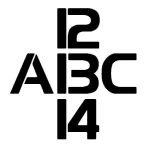
As a personality psychologist, I work in the “study of lives” tradition pioneered by Henry Murray, Robert White, Erik Erikson, and M. Brewster Smith, investigating single lives in depth. I conduct open-ended interviews to elicit life-stories, beliefs, and values, and then use a variety of narrative analysis methods to study how people construct their identities, and to shift among multiple identities.
Most of those who study life-narratives follow Erik Erikson and Alfred Adler in believing that identity is formed as a personal myth. Dan McAdams has explored the ways that a person’s identity comes to be anchored in the plot structure of his/her life-story. In addition to studying life-narrative plot structures, I draw on Levi-Strauss “generative” theory of myth to examine how a core set of binary oppositions – of contrasting self-symbols and metaphors, and of self vs. other oppositions – can define a deep structure from which the surface structures of a person’s main identities are “generated.”
I am especially interested in how generative theories of tonal music may help understand this process. Though I am not a musician, I have been exploring the ways that life-narratives – and self-representation in general — may use structures similar to those of tonal music. In particular, I believe that people configure “key” symbols, metaphors, motifs, and images into scale-like relations that define a set of life-spaces within which they experience themselves as moving as they live their life-stories in everyday settings and relationships. Performing one’s identity thus resembles a musician playing the notes in a melody, with each not heard as a sense of “departure from” and “return toward” the octave end-points, which in narratives tend to be defined by key self-symbols or metaphors. In addition to guiding people through their social roles, identity enables people to “orchestrate” their emotional lives: charting how they can create/pursue enlivening tensions within a familiar terrain, and also how they can “resolve” states of distress and discord by moving — narratively and performatively — toward the positive affects associated with “home” points. People also shift between identities / life-spaces, often by figure-ground reversals of key symbols or metaphors, with the narrative shifts resembling musical changes of key through modulating chords.

In many life-narratives, symbols and metaphors that are structurally-ambiguous – like the B / 13 representation to the right – play key roles in self-representation, and appear to organize shifts of states or selves. As a crude analogy: the B / 13 can define one as a “letter-type person” in one context and then as a “number-type person” in another – effectively redefining one’s experience from a “scale”-space of letters to a “scale”- space of numbers. This organizes the kind of “frame-shifting” that occurs when a bilingual person shifts from one language to another, or when a bi-cultural person shifts from one cultural world-view to another, or that George Lakoff describes some people doing when they shift between liberal and conservative outlooks on a political issue.
Scale-like relations appear especially important to “orchestrating” humans’ emotional lives – giving them at least an illusion of control over their feelings and desires — as they script how they move among the main “regions” of the life-space that their identity maps (as Kurt Lewin conceived it), and how they may shift between identities to bring on-line a different life-space that has different emotional timbres.
In 1890 William James discussed the evidence that people have multiple self-representations, and posed the question of how people maintain a sense of coherence as s/he shifts among multiple “Me” representations. The “musical” model of identity holds that it is the system of scale-like relations – within which people move and shift — that confers the sense of sameness and continuity as often disparate self-representations come “on line” and recede from foreground into background.
